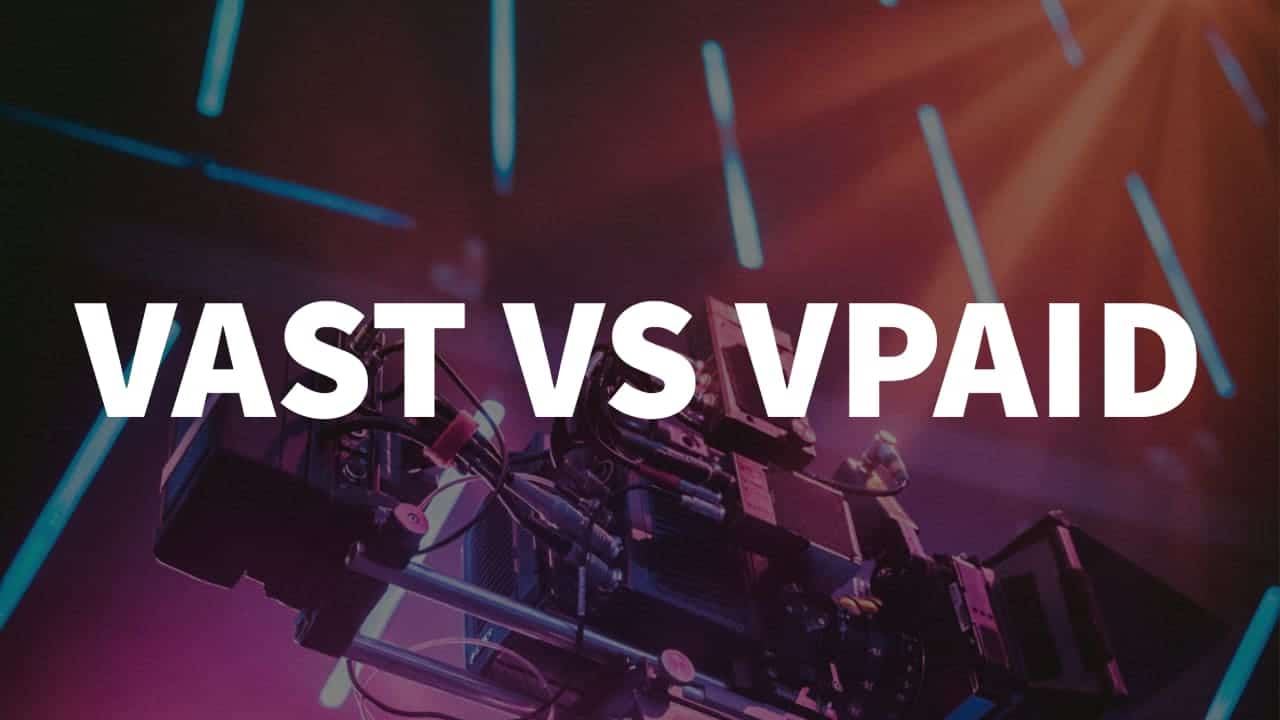
This post was most recently updated on January 18th, 2023
Protocols like VAST and VPAID serve a critical role in digital advertising for publishers and advertisers. Both were launched by the IAB (Interactive Advertising Bureau) as part of the IAB Video Suite to serve the digital video industry and further in-stream video ads. In this post, we’ll take a closer look at the VAST and VPAID scripts to help you understand their importance for your publisher ad stack.
VAST is short for Video Ad Serving Template which is a standard template that helps video players work with a publisher’s ad server.
Through the script, video players can find out which ads to play, how to display them, the length of the ad, functionality involved and more. It enables in-stream video ads to be served across VAST compliant video players.
The latest release of VAST was in 2018 with the IAB releasing VAST 4.1.
VPAID is short for Video Player Ad-Serving Interface Definition. Similar to VAST, it tells the video what ad to play, but gives more interactive ad elements like overlays to help boost ad performance for advertisers.
This includes ads with actions such as prerolls with CTAs for the viewer to learn more and elements like play, pause, skip, enlarge and more. Advertisers can also track key performance metrics such as viewability, completion rate, and clickthrough rate.
VPAID also helps advertisers setup more personalized campaigns off of geographic information. For instance CTAs for different regions like LA or SF.
The latest release of VPAID was in 2012 with the IAB releasing VPAID 2.0.
VAST, VPAID or both? Which should you use or implement and how? All these digital advertising specifications can get complicated at times.
If you want to find out how to take advantage of video ads, get in touch with us today and our ad optimization experts will take a look at your setup.
Sign up for a Professional account at MonetizeMore today!
VAST stands for Video Ad Serving Template, a standardized template that enables video players to work with your ad server. It gives the video player crucial information such as which ad or ads to play, running time, display options, etc.
Vpaid is more suited to mobile environments, offering a range of features such as overlays and measurement tools to provide information to publishers and more engaging experience to the user. VAST can be used anywhere and enables more video players and ad servers to communicate with each other, meaning more volume.
If you’re working with an ad server like Google Ad Manager, you can create video ad units, and work with third-party networks. Google Adsense also offers video advertising, for which you’ll need a suitable video player integrated with the Google IMA SDK and/or compliant with VAST 3.0 or VPAID 2 JS.
VPAID stands for Video Player Ad-serving Interface Definition. It was developed by the IAB to manage how ad units and video players communicate and also adds additional features such as overlays to increase engagement.
With VPAID tags, you can take advantage of more tools such as overlays, which trigger more user interaction. VPAID can also measure engagement. However, compared to VAST in case result in slower load times.
VAST tags can be thought of as scripts that give instructions to the video player. This information includes the ad to play, when it should show and for how long, the link to the ad via the ad server and the result of any click on the ad, plus what engagements the user can make to the ad if they are not interested, such as skipping or closing.
10X your ad revenue with our award-winning solutions.